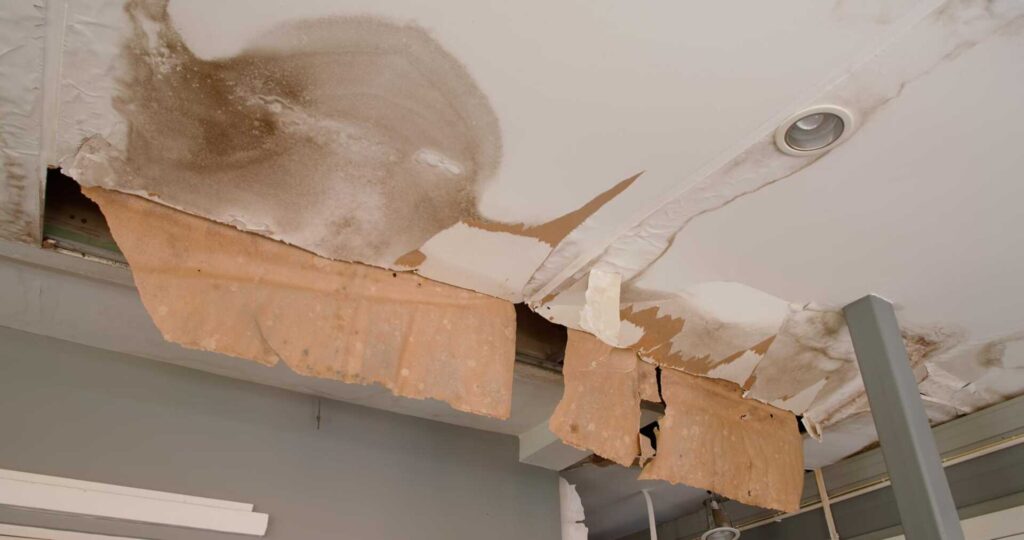
Contents
When faced with water damage in your home, it’s crucial to explore sustainable repair techniques that benefit the environment and your finances in the long term. By incorporating eco-friendly practices and implementing innovative drying methods, you can revolutionize the traditional approach to water damage. From cutting down on water usage to reducing energy consumption, these methods provide a fresh outlook on restoration that is both effective and eco-conscious. So, how can you integrate these sustainable strategies into your upcoming water damage repair project?
Key Takeaways
- Utilize passive airflow drying methods for eco-friendly moisture removal.
- Incorporate greywater reuse and rainwater harvesting to conserve water.
- Opt for bamboo flooring and recycled insulation for sustainable repairs.
- Choose green mold remediation techniques like vinegar and tea tree oil.
- Implement energy-efficient drying techniques with solar-powered dehumidifiers.
Eco-Friendly Cleaning Products
When it comes to water damage repair techniques, utilizing eco-friendly cleaning products is a fundamental aspect of the process. Natural disinfectants and biodegradable detergents are key components in ensuring an environmentally friendly approach to restoring your space after water damage.
Natural disinfectants like vinegar and hydrogen peroxide are effective in killing germs and bacteria without leaving harmful residues behind. These products aren’t just safe for the environment but also for your health, minimizing the risk of exposure to harsh chemicals during the cleanup process. Incorporating these natural disinfectants into your cleaning routine can help sanitize the affected areas without compromising sustainability.
Biodegradable detergents are another essential tool in eco-friendly water damage repair. These detergents are formulated to break down into non-toxic substances after use, reducing their impact on the environment. By choosing biodegradable detergents, you can effectively clean surfaces without introducing harmful pollutants into the ecosystem.
When selecting cleaning products for water damage repair, opt for those that are labeled as environmentally friendly, non-toxic, and biodegradable. By prioritizing eco-friendly options like natural disinfectants and biodegradable detergents, you can promote sustainability while restoring your space to its pre-damaged condition.
Energy-Efficient Drying Techniques
To efficiently address water damage and prevent further issues, employing energy-efficient drying techniques is essential. When dealing with water damage, utilizing solar-powered dehumidifiers can be a game-changer. These dehumidifiers harness the power of the sun to operate, reducing the reliance on traditional electricity sources and minimizing the overall carbon footprint of the drying process. By taking advantage of renewable energy, you accelerate the drying process and also contribute to a more sustainable approach to water damage repair.
In addition to solar-powered dehumidifiers, passive airflow drying is another effective energy-efficient technique. This method involves promoting natural airflow within the affected area by strategically placing fans and opening windows. By allowing air to circulate freely, moisture evaporates faster, aiding in the drying process without the need for excessive energy consumption.
Passive airflow drying is environmentally friendly and also cost-effective in the long run.
Sustainable Building Materials
By incorporating sustainable building materials into your water damage repair projects, you enhance the structural integrity of the affected area while also contributing to environmental conservation.
Bamboo flooring is an excellent option for areas prone to water damage due to its high resistance to moisture and durability. This eco-friendly material provides a beautiful finish and helps maintain a healthy indoor environment by reducing allergens and pollutants that can accumulate in traditional flooring materials.
Regarding insulation, using recycled materials is a sustainable choice that can benefit both your repair project and the environment.
Recycled insulation, made from materials like recycled denim or glass, offers excellent thermal performance while reducing the need for new resources. This helps in conserving energy and minimizes the environmental impact associated with traditional insulation manufacturing processes.
Incorporating bamboo flooring and recycled insulation into your water damage repair projects is a smart way to promote sustainability and resilience. These materials contribute to the longevity and strength of the repaired area and align with eco-conscious practices, making your repair efforts both effective and environmentally friendly.
Water Recycling Methods
Curious about how to effectively incorporate water recycling methods into your water damage repair projects? Water recycling is a sustainable approach that can help you reduce your environmental impact while restoring properties. Here are some key techniques to keep in mind:
Greywater Reuse: Utilize greywater from sinks, showers, and washing machines for non-potable purposes like toilet flushing or outdoor irrigation. This can greatly reduce your freshwater consumption.
Rainwater Harvesting: Collect rainwater from roof runoff in storage tanks for later use in irrigation or other non-drinking water applications. It’s a simple yet effective way to lessen reliance on municipal water sources.
Water Conservation: Implement water-saving fixtures and appliances during repairs to minimize water wastage. Low-flow toilets, faucets, and showerheads can make a significant difference in overall water usage.
Sustainable Irrigation: When restoring outdoor spaces affected by water damage, opt for sustainable irrigation practices like drip irrigation or rain sensors. These methods ensure water is efficiently distributed to plants without unnecessary waste.
Green Mold Remediation Strategies
Incorporating green mold remediation strategies into your water damage repair projects can enhance the sustainability of your restoration efforts. When dealing with mold after water damage, opting for organic mold removal methods is effective and environmentally friendly. Look for natural solutions such as vinegar, hydrogen peroxide, or tea tree oil to eliminate mold without harsh chemicals. These organic options are safer for both your health and the environment compared to traditional mold removal products.
To prevent mold from regrowing, consider implementing natural dehumidification techniques. Proper ventilation is key to reducing moisture levels in the affected area. Open windows, use fans and consider investing in a dehumidifier to keep humidity levels in check. Additionally, utilizing natural desiccants like silica gel or calcium chloride can help absorb excess moisture in the air, further inhibiting mold growth.
When conducting mold remediation, it’s essential to address the root cause of the issue to prevent future outbreaks. By embracing green mold remediation strategies, you aren’t just effectively removing mold, but you’re also promoting a healthier indoor environment and reducing the environmental impact of your restoration project.
Review
Implementing sustainable water damage repair techniques is vital for minimizing environmental impact and promoting conservation efforts. By incorporating eco-friendly cleaning products, energy-efficient drying techniques, sustainable building materials, water recycling methods, and green mold remediation strategies, you can ensure a holistic and environmentally conscious approach to repairing water damage. Remember, in a world where resources are finite, it is crucial to prioritize sustainability to protect our planet for future generations.
Recent Posts
DIY Home Water Removal Tips for Emergencies
If you’ve ever experienced a burst pipe flooding your basement, you know the panic of
Top 7 Expert Fire Damage Restoration Tips
Imagine facing the aftermath of a fire in your home, unsure of where to begin
Top-Tier Fire Damage Restoration Services Explained
When facing the aftermath of a fire, the importance of selecting top-tier fire damage restoration
